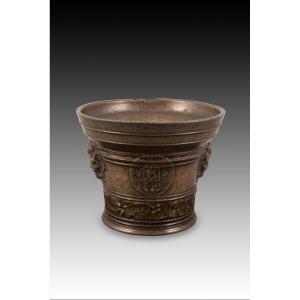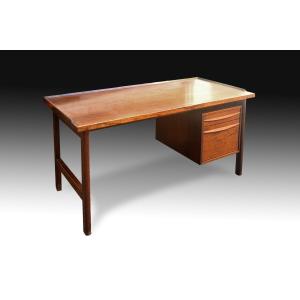It has undergone restorations.
Portable watch in the shape of a cross with an openwork exterior depicting figurative Christian scenes and the movement inside, a dial with a gold band with Roman numerals for the hours, a single hand and an engraved decoration around it, also with a religious theme; on the back, you can see the bottom of the movement, with a delicate decoration also openwork based on plant motifs reminiscent of classicism, and a band on the case of the piece with simplified plant elements. On the outside, on one side we find the crucified Christ, flanked by the Virgin Mary and Saint John, and the figures surrounded by a delicate composition based on plant scrolls, with an angel's head at the foot of the piece. The other side shows the Resurrection of Jesus, with Christ emerging from the empty tomb and the soldiers on either side, always with scrolls and above another angel's head. On the edges, there are plant and floral elements, accompanied by figures placed in plaques. Inside, and on either side of the dial, we see Original Sin at the bottom and the Expulsion from Paradise, with Adam on one arm of the cross that forms the clock, Eve on the other and the angel above, brandishing the flaming sword (thus following, in part, the biblical text).
Several antique portable clocks are known to have been given a form other than that usual for such objects. Thus, although the best known is the skull-shaped clock in the Metropolitan Museum (movement of about 1650 by Isaac Penard, case of about 1810-1820), and knowing that they are not at all of the usual type, there are several examples in the form of a Latin cross. Let us recall, for example, some of those preserved at the Ashmolean Museum in Oxford: one attributed to Cornelius Stimmer (active around 1660) presents the crucified Christ on the front, flanked by the four evangelists; another by Barthélemy Cheuillard (active 1636-1677) dated around 1650, has a raw metal case and an engraved decoration on the inside; other examples, such as the one dated around 1660 or another by Didier Lalemand (active 1675-1686) dated around 1660 or 1630, follow the usual pattern for these extraordinary examples, which is to have the outer case in rock crystal. This is also the case of the clock by Charles Bobinet, probably painted by Werner Hassel and dated to the middle of the 17th century, kept at the Metropolitan Museum, and that of the British Museum in London by Jean Rouseeau the Younger, dated between 1640 and 1650 and made in Switzerland.
Dimensions: 7x5.5x2.5 cm


















































 Le Magazine de PROANTIC
Le Magazine de PROANTIC TRÉSORS Magazine
TRÉSORS Magazine Rivista Artiquariato
Rivista Artiquariato